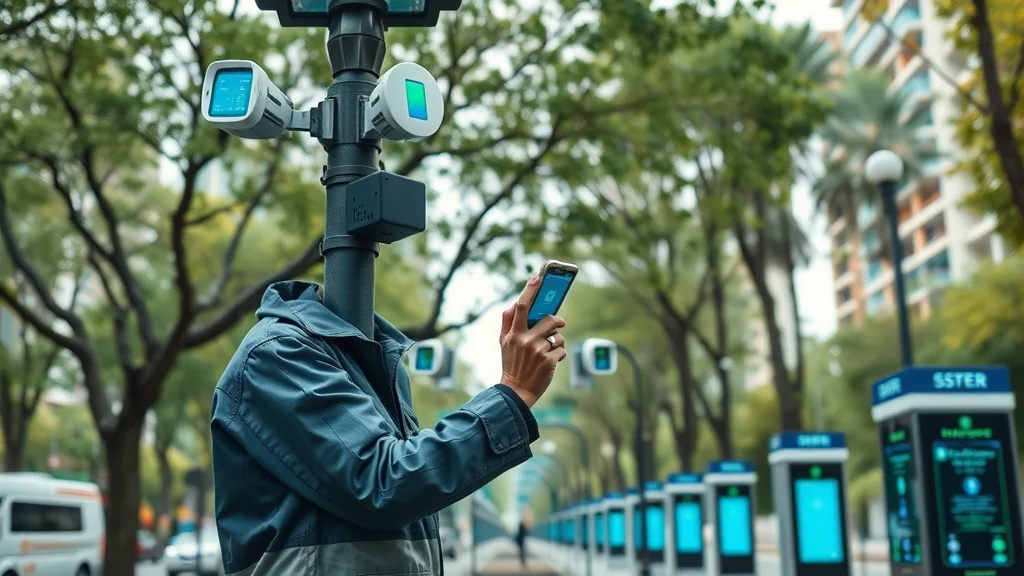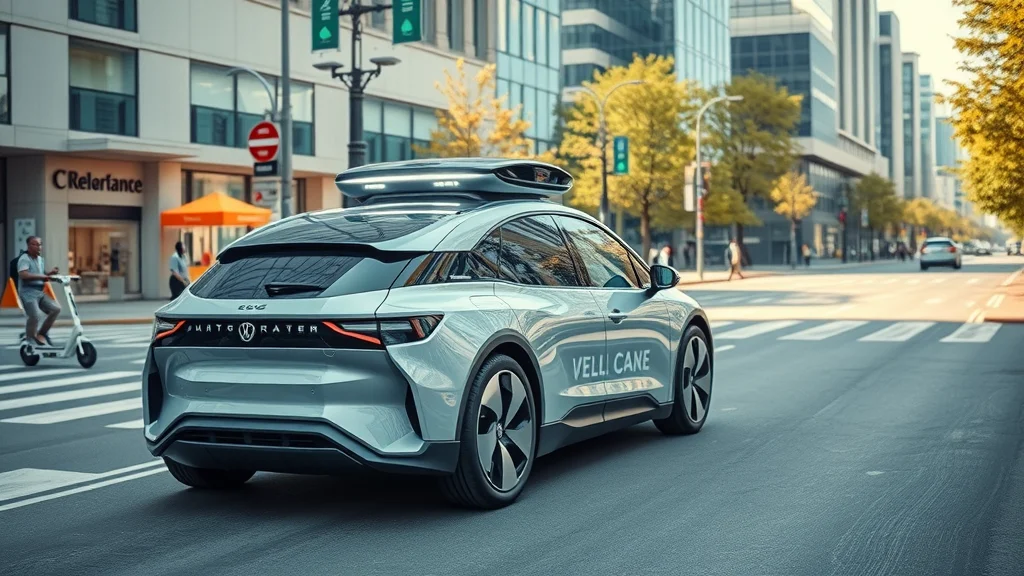Did you know? By 2050, nearly 70% of the world’s population will live in cities, making smart city technologies essential for sustainable growth. This dramatic shift signals a revolution in how we design, manage, and experience our urban spaces. Across the UK and the world, smart cities are using data, artificial intelligence, and the internet of things to rethink everything from traffic congestion to climate change. Let's discover how these technologies are reshaping city life for a smarter, safer, and more sustainable tomorrow.
Reimagining Urban Life: The Era of Smart Cities

The rise of smart cities is changing urban living in ways we could hardly imagine a decade ago. This transformation is driven by integrating smart city technologies such as connected devices, sensors, and real-time data analytics into daily city functions. Today, smart city projects aim to solve age-old city problems—like traffic congestion, inefficient public transport, and poor air quality—through innovative technology and intelligent design.
As more people flock to urban areas, the need for sustainable, technology-driven urban planning becomes crucial. Smart city initiatives don't just make city life more convenient; they also enhance the quality of life by improving public safety, public health, and environmental sustainability. From self-adjusting traffic lights to city technologies that monitor energy use and air quality, the world of smart cities is fast becoming a reality, not just a vision for the future.
- Discover the impact of smart city initiatives on daily life
- Understand core smart city technologies and their influence on urban environments
- Explore global and UK smart city projects shaping the future
"By 2050, nearly 70% of the world’s population will live in cities, making smart city technologies essential for sustainable growth." - UN DESA report
What You'll Learn About Smart Cities
- Key components and benefits of smart cities
- How smart technologies are integrated into local government and city initiatives
- Case studies of effective smart city projects worldwide
- Challenges and future trends facing smart cities
What are Smart Cities in the UK?
Defining Smart Cities for the Modern Age
"A smart city uses digital technology to improve urban services, cut resource use and engage more effectively with citizens."

In the UK, the concept of smart cities has evolved from simply using digital technology in urban planning to creating interconnected environments that enhance daily life for everyone. UK smart city initiatives combine the power of the internet of things, artificial intelligence, and city technologies to monitor and manage services such as transportation systems, air quality, and energy consumption. For local government, this means new opportunities to collect data in real time, making public services more responsive and efficient.
Today’s UK smart cities embrace advanced smart technologies like environmental sensors, smart lampposts, and double-decker buses fitted with real-time tracking. These connected devices enable local government to respond faster to resident needs—whether it’s adjusting public transport schedules based on data collection or using smart city tech to monitor air quality in busy areas. As a result, city projects are creating cleaner, safer, and more connected urban environments.
How the UK is Leading Smart City Initiatives
- London’s real-time traffic management system
- Manchester’s CityVerve IoT project
- Glasgow’s Open Data platform
| UK City | Smart City Initiative | Outcomes |
|---|---|---|
| London | Traffic Management | Reduced congestion by 20% |
| Manchester | CityVerve IoT | Enhanced public health monitoring |
| Glasgow | Open Data | Improved transparency and services |
These city projects demonstrate how UK cities are becoming global leaders in smart city initiative. Whether it’s reducing traffic congestion in London, leveraging the internet of things for health monitoring in Manchester, or driving transparency with open data in Glasgow, these efforts are making a lasting impact on quality of life. Local government partnerships with technology providers are essential in scaling up these achievements and ensuring that future smart city projects benefit residents nationwide.
What is Meant by Smart Cities?
Core Features of a Smart City

So, what truly sets smart cities apart from traditional urban spaces? First and foremost, it’s the deep integration of internet of things devices and artificial intelligence into the core infrastructure. Smart city technologies go far beyond simple automation—they enable data collection and smart tech management at a scale that directly benefits public health, renewable energy use, and efficient urban planning. Sensors embedded in roads, buildings, and public spaces constantly feed data back to city control rooms, helping authorities respond promptly to issues like traffic congestion, energy consumption, and even climate change threats.
Another essential component is the open collaboration between local government and technology partners. By working hand-in-hand, these groups drive city initiatives that address both immediate concerns and long-term challenges. Public engagement is encouraged through digital platforms, increasing transparency and citizen participation in city projects such as environmental monitoring, waste management, and urban design improvements. Ultimately, the true hallmark of smart cities is this ongoing innovation fuelled by new technologies, community involvement, and a shared vision for better living.
- Integration of internet of things in infrastructure
- Use of artificial intelligence for data analytics and management
- Collaboration between local government and technology partners
Key Technologies Underpinning Smart City Projects
- Smart sensors for real-time urban data
- AI-powered resource allocation
- Mobile applications connecting citizens and city services
Smart city projects are powered by a diverse suite of smart technologies aimed at streamlining city management and enhancing quality of life. Real-time sensors are at the heart of these efforts, enabling cities to monitor everything from transportation systems and energy usage to waste collection and environmental conditions. Additionally, sophisticated artificial intelligence algorithms analyse data at speed, driving smarter decision-making for local government and empowering rapid responses to public needs.
Beyond infrastructure, mobile applications play a growing role—letting citizens interact directly with city services, report issues, or access real-time updates on public transportation or energy use. By integrating these technologies, smart cities create highly effective city initiative programs that turn crowded, complex urban environments into flexible, efficient, and citizen-friendly spaces.
Do Smart Cities Already Exist?
Notable Examples Around the World
- Barcelona: Smart lighting and waste management
- Singapore: City-wide IoT and AI for transportation
- Amsterdam: Digital citizen engagement platforms

"Smart city projects are already making urban living cleaner, safer, and more efficient in cities worldwide."
Yes, smart cities are not just futuristic concepts—they already exist and are transforming urban living on a daily basis. Barcelona, for instance, has adopted sensor-enabled streetlights that adjust brightness according to real-time needs, reducing energy consumption while boosting safety. The city’s smart waste bins help optimise rubbish collection, leading to cleaner streets and a more efficient use of resources. These changes demonstrate how even traditional cities can leverage city technologies to deliver significant benefits for residents and visitors.
Beyond Europe, cities such as Singapore and Amsterdam are renowned for pioneering the use of artificial intelligence, internet of things, and open data platforms to manage everything from traffic flow to citizen engagement. These city projects highlight how combining advanced technology with proactive local government can radically improve urban experiences, sustainability, and daily quality of life for millions.
| City | Smart Tech Feature | Benefit |
|---|---|---|
| Barcelona | Smart Street Lighting | Reduces energy waste |
| Singapore | AI Traffic Management | Shortens commutes |
| Amsterdam | Open Data Portals | Drives innovation |
What is an Example of a Smart City?
Case Study: Barcelona as a Pioneering Smart City
- Implemented smart waste bins for efficient collection
- Integrated public transport data with smartphone apps
- Digital citizen services enhance communication with local government

In Barcelona, smart city projects have shown how targeted technology investments can produce clear, noticeable results for urban communities. The city rolled out hundreds of sensor-enabled waste bins, allowing sanitation workers to collect rubbish only when bins are full, thus reducing unnecessary travel, cutting emissions, and keeping streets tidier. Barcelona also integrated real-time data from its public transport system into smartphone apps, helping residents plan their journeys and avoid delays.
One key to Barcelona’s success is its focus on putting people at the heart of every city initiative. Digital platforms connect citizens directly with local government, making it easy to share issues, access services, or provide feedback. These advances not only make daily life easier and more pleasant for citizens but also create a strong feedback loop so the city can keep learning and improving. It’s a model for other cities aiming to turn smart technologies into real, sustainable improvements.
Smart City Technologies: The Building Blocks
Leveraging Internet of Things (IoT) in Smart Cities

The internet of things sits at the centre of all modern smart city projects. By embedding connected devices throughout public and private infrastructure—lamp posts, bus stops, buildings, even pavement—cities can collect and analyse vast amounts of data in real time. These sensors provide actionable insights for local government to improve public safety, optimise public transportation, and reduce energy consumption.
IoT applications in smart cities range from monitoring air quality to automatically adjusting heating, lighting, and water supplies in smart buildings based on usage patterns. In essence, these technologies allow cities to operate more efficiently, respond proactively to issues, and reduce environmental impact. For residents, the result is a smoother, safer, and smarter urban experience driven by invisible yet powerful connected technology.
Artificial Intelligence at the Core of Smart City Initiatives
- Predictive analytics for energy use
- Optimised emergency response
- Machine learning for public health

Artificial intelligence (AI) is the supercharged engine behind many smart city technologies. It makes sense of the immense flow of data collected by city sensors and connected devices, helping local government agencies make mission-critical decisions in seconds. For example, AI-powered analytics can predict spikes in energy use, letting city managers adjust supply before shortages hit. Or during emergencies, AI can identify where help is needed most, streamlining response and potentially saving lives.
Machine learning—a branch of AI—enables city systems to get smarter over time. As smart city projects collect data on everything from traffic flow to hospital admissions, algorithms can spot trends, predict needs, and propose new ways to solve persistent problems like public health crises or climate change impacts. By integrating AI into their city initiative strategies, urban leaders ensure their smart cities will stay adaptive, responsive, and resilient as urban environments continue to evolve.
Driving Forces Behind Smart Cities Development
Why Local Government and Partnerships Matter
- Collaboration between public and private sectors
- Community involvement in smart city projects
- Strategic planning and city technology upgrades

"Effective city initiatives rely on inclusive partnerships, integrating city technologies with citizen needs." - Smart Cities Council
Smart cities thrive when local government joins forces with private sector innovators and the local community. These partnerships are vital to pilot new technologies, share risks, and ensure every city initiative is designed around real-world challenges and resident needs. By working together, governments and tech partners can unlock fresh funding avenues, foster creative problem-solving, and rapidly roll out new city projects.
Citizen engagement is just as important. Successful smart cities regularly involve residents by hosting public consultations, running digital feedback platforms, or letting communities test out new technologies. Such community involvement produces better, more inclusive solutions and boosts trust in local government. Ultimately, strategic planning that values diversity, innovation, and collaboration helps smart city projects deliver lasting value for everyone.
Current Challenges for Smart Cities
Navigating Privacy and Security in Smart City Projects

While city technologies provide enormous benefits, they also raise serious privacy and security concerns. Smart cities depend on a wide range of data collection methods—monitoring traffic flow, tracking energy consumption, and even measuring air quality—all of which create large volumes of sensitive data. Protecting this data and respecting individual privacy is a top challenge for local government and technology partners worldwide.
Smart city projects must constantly update and reinforce cybersecurity measures to guard against hacking, data breaches, or misuse of personal information. Creating strong, transparent data governance standards is essential, ensuring citizens know what data is collected, how it’s used, and how it is kept safe. Addressing these challenges is not just a technical necessity but also vital for maintaining public trust in city projects and technology-driven governance.
Funding, Deployment, and Social Equity in Smart Tech
- Addressing data governance standards
- Ensuring equal access to smart city benefits
- Overcoming financial barriers for city technology projects
Developing smart cities takes significant resources and ongoing investment—but access to smart technologies must be equitable. Financial barriers can affect whether smaller cities or disadvantaged communities benefit from the latest tech solutions. Local government leaders are tasked with securing funding, forming partnerships, and ensuring that deployment doesn’t deepen existing social divides.
One way forward is by standardising best practices and making smart city tools widely available at affordable costs. Additionally, city initiatives need to focus on data governance—inclusive policies so everyone understands and trusts how data is used. Ultimately, smart cities must balance technological ambition with fairness, ensuring every community enjoys improved quality of life, not just the affluent or tech-savvy.
Emerging Trends and the Future of Smart Cities
From 5G to Urban AI: Next-Generation City Initiatives

- 5G-powered city networks
- Autonomous vehicles integrated with city grids
- AI-driven climate and sustainability strategies
Looking ahead, a new wave of smart city projects is set to elevate urban living even further. The rollout of 5G networks will supercharge city connectivity, supporting everything from autonomous vehicles to real-time data-powered city management. Future-facing city technologies also include AI monitoring for climate change adaptation, renewable energy integration, and next-level public transportation systems working seamlessly through digital platforms.
Autonomous vehicles—cars, buses, delivery drones—will become integral to city planning, reducing congestion and emissions. Smart city initiatives will also take aim at big problems like air quality and sustainability, using digital technologies to track carbon footprints, cut energy consumption, and promote more green public spaces. By staying agile, innovative, and inclusive, the cities of tomorrow will be cleaner, safer, and more connected than ever before.
Smart Cities in Action: Video Tour
Watch our dynamic walkthrough of smart city technologies in action—from IoT sensors and adaptive traffic management to digital engagement screens—featuring interviews with residents and scenes from iconic UK and international locations. See how digital transformation is unfolding on the ground and learn from those already living in smart cities.
How Smart Cities are Impacting Daily Life: Video Insights
Explore how smart city projects are making a meaningful difference for individuals and communities—providing safer streets, better transit, cleaner public spaces, and accessible digital services for everyone. These video insights showcase the human side of city tech and the benefits that smart initiatives bring to everyday life.
Smart Cities: Frequently Asked Questions
-
What technologies make cities 'smart'?
Smart cities use a combination of digital technology such as the internet of things (IoT), artificial intelligence, smart sensors, and big data analytics. These tools allow cities to collect data in real time, optimize services, and improve public safety, transportation, and environmental monitoring. -
How do smart cities improve quality of life?
They help reduce traffic congestion, enhance public transport, improve air quality, and make access to services faster and more reliable. Smart city initiatives ensure residents enjoy a safer, cleaner, and more efficient urban experience, improving overall quality of life. -
Are there risks associated with smart city tech?
Yes, risks include cybersecurity threats, privacy concerns, and unequal access to technologies. Cities must address data governance and ensure everyone benefits from new tech while keeping personal information safe. -
How can citizens get involved in smart city projects?
Citizens can participate by providing feedback through digital platforms, joining community forums or consultations, and suggesting solutions for local needs. Involvement ensures city projects meet real-world requirements and stay responsive.
Key Takeaways on Smart Cities
- Smart cities harness advanced tech like IoT and AI to enhance urban living
- City initiatives worldwide demonstrate tangible benefits in sustainability, safety, and efficiency
- Ongoing collaboration between local government, technology partners, and citizens is crucial for success
Share Your Perspective on Smart Cities
We'd love to hear what you think about this? Please add your comments below...
In conclusion: Smart cities are here—and they’re making everyday urban life smarter, safer, and more sustainable for all.
To deepen your understanding of smart cities and their transformative impact on urban living, consider exploring the following resources:
- “What Is a Smart City?” (cisco.com)
This article provides a comprehensive overview of how digital technologies are integrated into urban environments to enhance the quality of life for residents.
- “Smart Cities – Cities of the Future” (microsoft.com)
This resource delves into the various technologies and strategies that cities are employing to become smarter and more sustainable.
If you’re serious about understanding the evolution and implementation of smart city technologies, these resources will offer valuable insights into the future of urban development.
 Add Row
Add Row  Add
Add 










Write A Comment